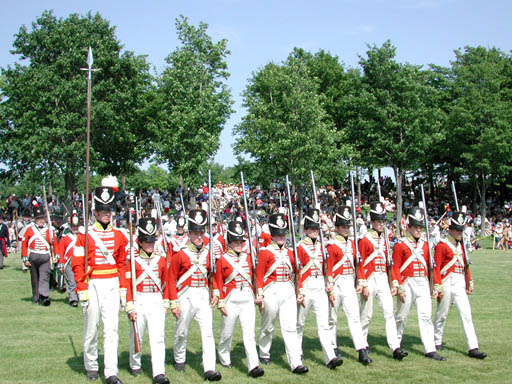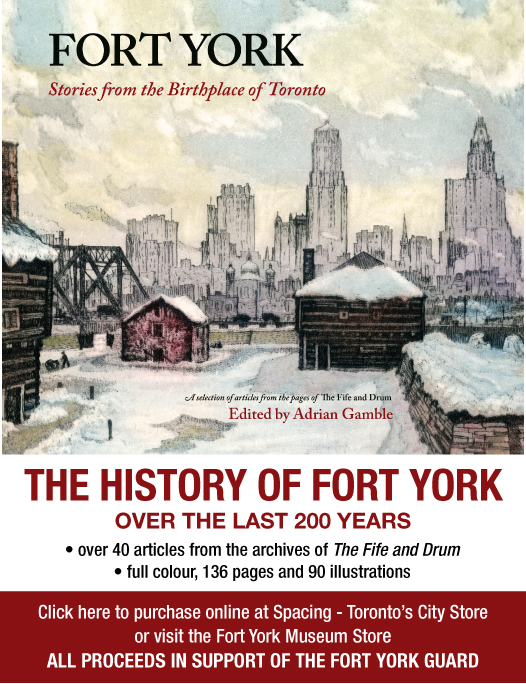The principled legacy of Stephen Otto
by Andrew Stewart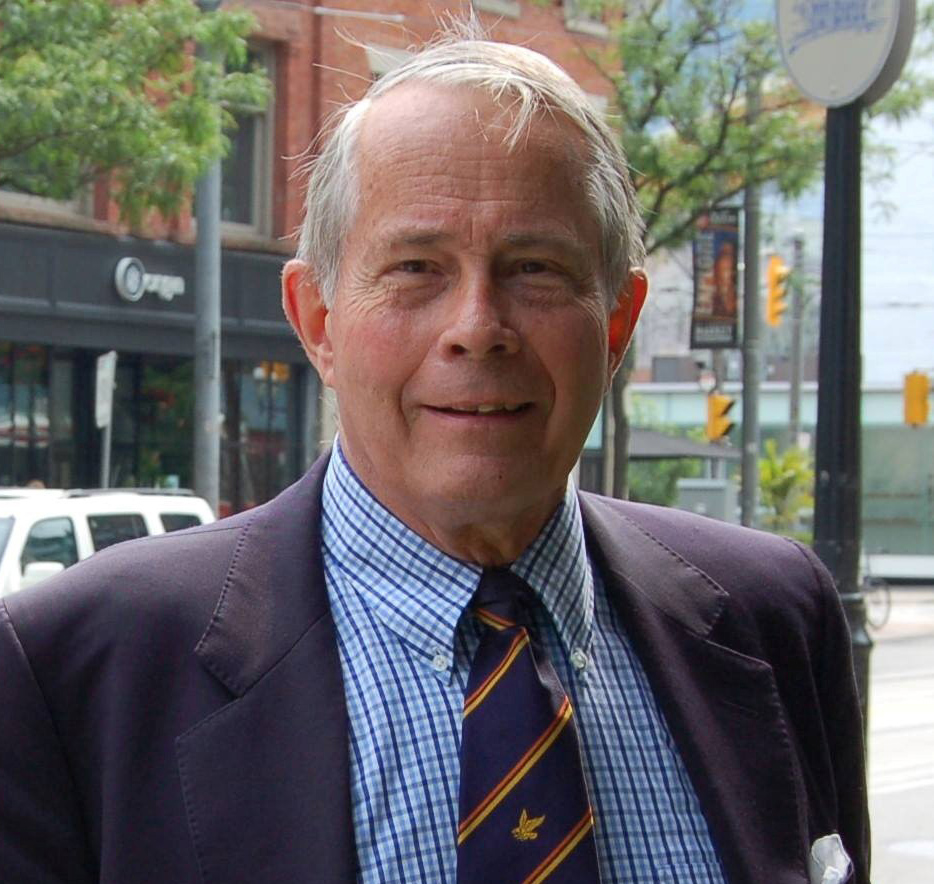 Steven Anderson Otto, CM 1940–2018
Steven Anderson Otto, CM 1940–2018
Stephen Anderson Otto, who died this past April, was the founding and managing editor of The Fife and Drum from 2003 until 2017. His life-long work in fostering heritage, architectural history and conservation in the Province of Ontario and his founding role in the Friends and the Fort York Foundation are well known.
Perhaps less widely appreciated was his skill in forecasting problems and opportunities for the fort and the neighbourhood. His concerns always arose from first principles: define and protect Fort York’s interests; strengthen its historic assets; and diffuse knowledge about Toronto’s founding site across the city. These principles inspired his choice of topics for The Fife and Drum.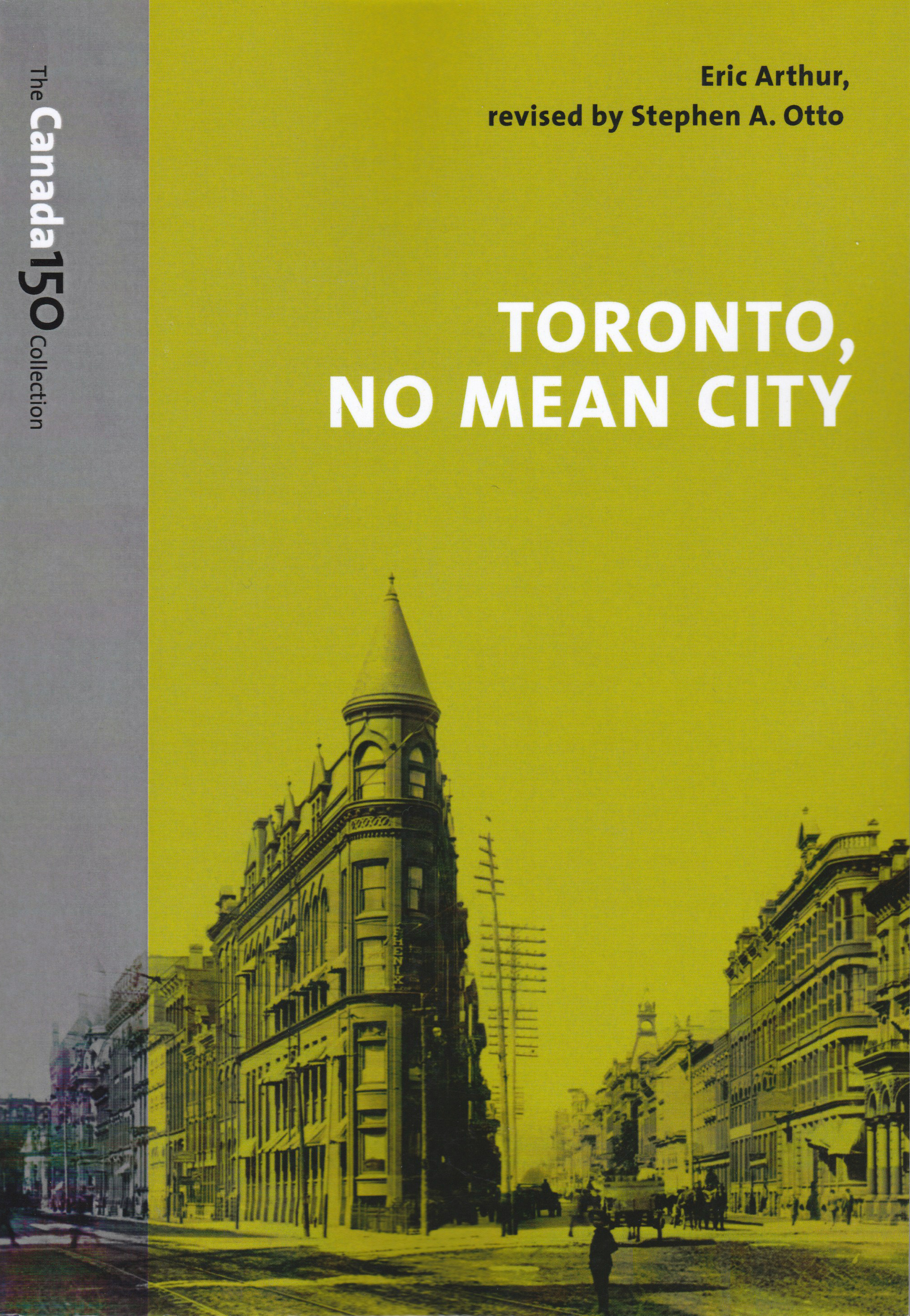 This book by Eric Arthur, originally published in 1964, has been described as “the most significant book on the fabric of the city to appear since John Ross Robertson’s Landmarks” was published at the beginning of the 20th century. The assessment is by Stephen Otto in his own Preface to the Third Edition of Arthur’s work, which he comprehensively revised and saw published in 1986. Adding four newly commissioned essays, the University of Toronto Press includes this edition in its Canada 150 Collection. Its' a new series reprinting what they regard as “classic works of cultural, historical, legal, and literary scholarship that have informed and shaped Canada as a nation.”Over the years they included building projects (especially the Visitor Centre) along with site and precinct planning issues, examining their threats and opportunities (the Armouries, development proposals and pedestrian connections). Stories acknowledged the work of staff and volunteers at the fort and in the city’s museum departments and broadly explored the history of the neighbourhood (Fort Rouillé, the strangling of Fort York by railways and meat packers). For the War of 1812 bicentennial he commissioned a series of articles and reviews from accomplished authors and familiar names: Carl Benn, Richard Gerrard, Bob Malcomson, Chris Moore, Don Graves and many others. Art and archaeology were combined in erudite reports on 19th-century fort drawings, excavations and collections. There were stories about opportunities seized (York Militia Colours and the names of nearby streets) and missed (Battersby portrait). Sometimes – such as the Thomson family’s role in the building of the fort – the stories were researched and written by the editor himself.
This book by Eric Arthur, originally published in 1964, has been described as “the most significant book on the fabric of the city to appear since John Ross Robertson’s Landmarks” was published at the beginning of the 20th century. The assessment is by Stephen Otto in his own Preface to the Third Edition of Arthur’s work, which he comprehensively revised and saw published in 1986. Adding four newly commissioned essays, the University of Toronto Press includes this edition in its Canada 150 Collection. Its' a new series reprinting what they regard as “classic works of cultural, historical, legal, and literary scholarship that have informed and shaped Canada as a nation.”Over the years they included building projects (especially the Visitor Centre) along with site and precinct planning issues, examining their threats and opportunities (the Armouries, development proposals and pedestrian connections). Stories acknowledged the work of staff and volunteers at the fort and in the city’s museum departments and broadly explored the history of the neighbourhood (Fort Rouillé, the strangling of Fort York by railways and meat packers). For the War of 1812 bicentennial he commissioned a series of articles and reviews from accomplished authors and familiar names: Carl Benn, Richard Gerrard, Bob Malcomson, Chris Moore, Don Graves and many others. Art and archaeology were combined in erudite reports on 19th-century fort drawings, excavations and collections. There were stories about opportunities seized (York Militia Colours and the names of nearby streets) and missed (Battersby portrait). Sometimes – such as the Thomson family’s role in the building of the fort – the stories were researched and written by the editor himself.
Many of the best will be published in an anthology of The Fife and Drum in the autumn by the Friends of Fort York and Garrison Common. This writing and so much more was persuaded into existence by Steve with a relentless focus on agenda, an eye for detail, and a firm congeniality. As he once in December emailed to our board: “Eggnog, mandarins, shortbread and maybe a cake will help the agenda pass that much more quickly too.”
For two engaging summaries of Steve’s life and accomplishments, see his obituary in The Globe and Mail by John Lorinc and Alex Bozikovic on April 27, 2018, and a profile by Christopher Hume in the Toronto Star on March 21, 2010. Andrew Stewert is Board Chair of The Fort York Foundation.
Manager’s Report (Spring 2018)
by David O’Hara, Site Manager
 Here’s a Great War Cake ready to enjoy with a cup of tea. The recipe is from an upcoming collection from the time of the First World War being readied for the press by staff and volunteers of Fort York’s award-winning culinary history program. Look for it in the autumn. Photo: Melissa BeynonThe January opening of The Bentway’s skating trail here at Fort York made for a quick start to the year and we’ve barely slowed down since. Spring is the favourite time of year for school groups to visit the fort, and all that excitement lasts well into our season of major events – which begins with an annual milestone.
Here’s a Great War Cake ready to enjoy with a cup of tea. The recipe is from an upcoming collection from the time of the First World War being readied for the press by staff and volunteers of Fort York’s award-winning culinary history program. Look for it in the autumn. Photo: Melissa BeynonThe January opening of The Bentway’s skating trail here at Fort York made for a quick start to the year and we’ve barely slowed down since. Spring is the favourite time of year for school groups to visit the fort, and all that excitement lasts well into our season of major events – which begins with an annual milestone.
On Friday, April 27, we had a full day of student groups here for the 205th anniversary of the Battle of York. Throughout the weekend there was a terrific series of walking tours led by Richard Haynes and Ewan Wardle tracing the events of the day’s battle. Our historic kitchens were busy making tasty samples and there was a full slate of Kids’ Drills, re-enactors and interpretive booths. The Royal Canadian Sea Cadets took care of the garrison flag on Sunday.
On Saturday, May 12, some 3,000 people met at Fort York for the 17th annual Meagan’s Walk fundraiser. Mayor John Tory, in his opening remarks, proclaimed Pediatric Brain Tumour Day in memory of Meagan Bebenek, who died as a little girl from a tumour. A round of musket fire was the signal for the walkers to set out for Sick Kids hospital. The next day was the annual Sporting Life 10K, which ended at Fort York Boulevard and Fleet Street almost on the doorstep of the Visitor Centre. That event raises funds to send kids with cancer to Camp Ooch.
The following weekend included the Victoria Day holiday and started, on Saturday and Sunday, with the Beerlicious Spring Sessions on Garrison Common. More than 3,000 people, including the Mayor, were here for that. On May 24 Fort York and the Bentway together held an Open House to give the neighbourhood an overview of ongoing and upcoming site changes and events.
Attendance at Fort York during the Doors Open weekend, May 26 and 27, tripled this year over last. We also held our own Artillery Day on Sunday, adding modern guns to the fort’s collection of original artillery from the War of 1812 and the days of Queen Victoria (see page 13). Transit Bricks delighted visitors all weekend, displaying a whimsical set of TTC buses, streetcars and stations all made of Lego. We could also enjoy “Sifting Through the Pages: Behind the Scenes of Mixed Messages” from the Thomas Fisher Rare Book Library at the University of Toronto. The displays were a peek at the library’s current exhibition in culinary history and a chance to chat with the curators.
It’s a thrill to report that on the last Monday in May, public archaeology was welcomed back to Fort York National Historic Site. That’s when a team of nautical archaeologists, led by Caroline Kennedy and Julia Herbst from Texas A+M University, arrived to begin work right outside our front door. Their focus was the “CityPlace schooner,” the small ship whose anonymous remains, deposited outside the Visitor Centre in 2015, were unearthed during the building of a condominium 300 metres east of here. It was on a site which, in the 1830s, was at the foot of the old Queen’s Wharf. Active on Facebook, Twitter and Instagram and appearing in television news, they shone a spotlight on Fort York and Toronto’s original shoreline. The results of their investigation of the schooner’s build, purpose and fate will be seen in a future Fife and Drum.
Arts and Crafts Field Trip, headlined by Metric, returned for a sixth year in a row on the first weekend in June, bringing thousands of music fans down to Garrison Common for the two-day-long series of concerts (but temporarily closing the fort itself). And about 400 people were here on Sunday, June 17, for the Toronto Outdoor Picture Show screening of Spike Lee’s Do The Right Thing.
Our Indigenous Arts Festival, produced in partnership with the Mississaugas of the New Credit First Nation, began with a flag raising for National Indigenous Peoples Day on Thursday, June 21. It continued through to the end of Sunday with more than 30 performances by Indigenous artists from across Canada. The festival included traditional and contemporary music, dance, theatre, storytelling, visual arts, crafts and food. On the weekend was Na-Me-Res Toronto’s Annual Traditional Pow Wow, “Indigenous Day Live” hosted by the Aboriginal Peoples Television Network (APTN) and performances on the TD Main Stage presented by the Red Ride Tour (highlights are at www.toronto.ca/IAF). A special thank you to Kristine Williamson, Erica Roppollo, Leslie McCue and Lindy Kinoshameg for all their hard work in making the festival such a success despite the dampening effects of the rain.
The summer of 2018 is shaping up to be another stellar season for the Fort York Guard. This year we had several experienced members return to the guard who were able to hit the ground running with daily demonstrations of musketry, artillery and music. Special thanks are owed to Friends of Fort York volunteer and former guardsman Anton Degiusti for sharing his encyclopedic knowledge of 19th-century drill. The aim of the Fort York Guard, with Anton’s help, is totally authentic drill.
We’re finally nearing the end of much of the construction that has plagued the site for the past several years. The Bentway’s Strachan Gate is almost finished, landscaping is proceeding on several fronts, and Garrison Crossing – the footbridge over the railway tracks – is scheduled to open this fall. On the east side of the fort, the building of Lower Garrison Creek Park under and beyond Bathurst Street will begin in the autumn.
Our masonry restoration work on the historic brick buildings continues apace (and a comprehensive report on this will come in October’s Fife and Drum). And we were happy to get the news that Fort York is receiving $100,000 from Parks Canada’s National Historic Sites Cost-Sharing Program to help with restoring the aging cedar roofs on two of our buildings.
Finally, on May 7 we learned that the Fort York Visitor Centre is being awarded a Governor General’s Medal in Architecture as one of the finest new buildings in Canada. It was unfortunate that this great news came too late to be enjoyed by our good friend Steve Otto, who passed away in late April. Steve was instrumental in working with us to make the Visitor Centre a reality. Although engaged on many projects right up until his passing, a priority was the completion of the Visitor Centre’s weathered-steel façade. Steve had reached out to steel suppliers and fabricators himself in order to secure a good price on the work yet to be finished. We’ll continue to work with Councillor Layton’s office and the Bentway Conservancy to complete the Visitor Centre as envisioned by the architects and as championed by Steve.
Stephen Otto and Fort York
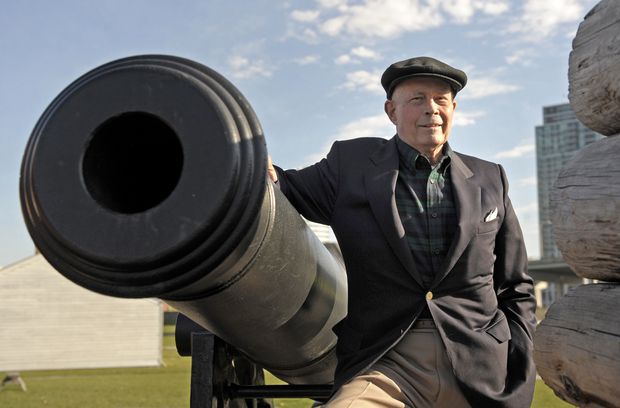 Stephen Otto is photographed at Fort York in Toronto in 2009. Fred Lum/The Globe and Mailby Andrew Stewart
Stephen Otto is photographed at Fort York in Toronto in 2009. Fred Lum/The Globe and Mailby Andrew Stewart
On 22 April, we lost one of our best friends. Stephen Anderson Otto was mentor and colleague to many people, not only the dedicated people who have worked over the past 25 years to re-connect and enhance Fort York’s public spaces with the City from which it was cut off more than a century ago, but also built heritage historians, biographers, architects, archaeologists, planners and thoughtful urbanists across the country. He was one of Canada’s foremost and skillful advocates for the public realm. He was inspiration for younger generations of city-builders (in the best sense of that over-used word): people actively engaged in place-making, activists who draw on a place’s history and architecture to improve the public realm.
 Steve Otto was managing editor of The Fife and Drum since its inception until Dec. 2017.
Steve Otto was managing editor of The Fife and Drum since its inception until Dec. 2017.
John Lorinc and Alex Bozikovic – two of Toronto’s most thoughtful urbanists and journalists – have written a superb obituary of Steve for The Globe and Mail. Eight years ago, Chris Hume also wrote about Steve in The Toronto Star – the “Quiet Canadian” who knew how things worked and how history contributed to better planning and growth.
In April 1994, Steve was spokesman for an ad hoc group of citizens, which included Rollo Myers, Cathy Nasmith and Bob Allsopp, later incorporated as The Friends of Fort York and Garrison Common, commenting on and changing the course of short-sighted decisions then being made by City Council’s Land Use Committee affecting the Fort’s precinct. From the beginning, a major focus of The Friends was on enlarging Fort York National Historic Site and consolidating the layers of protection it now enjoys under legislation at all levels. It achieved its current size of 43 acres in 2003. Along the way, Steve and The Friends forged strong relationships with City Council and City staff. He became founding editor of The Fife and Drum, which has grown in 20+ years from newsletter to quarterly journal, run entirely by volunteers, conveying news about Fort York, past and present, to thousands.
The Friends of Fort York influenced precinct planning in such a way that the Fort and its 43 acres of protected green space became recognized by most as an asset, rather than a hindrance, to neighbourhood development. The view that it could be a central park with green connections into the surrounding city was championed by Steve and given form by DTAH in its Fort York Parks and Open Space Network. Today’s Precinct Advisory Committee of The Friends, working closely with neighbours and various City and Provincial 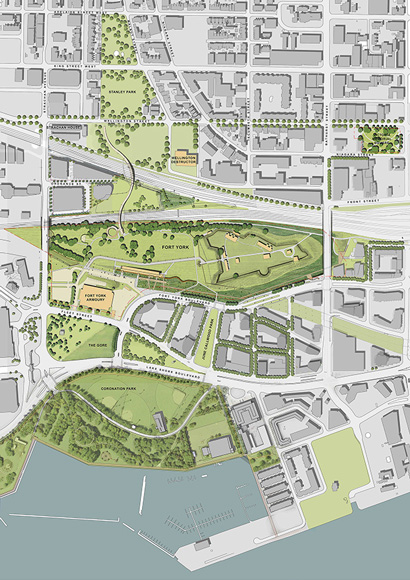 Fort York Parks and Open Space Network by DTAH for Friends of Fort York, 2014.agencies (most recently, Metrolinx), perpetuates this vital work. As developments and infrastructure are proposed, and as development lands change hands and short-term plans are discarded, The Friends consistently preserve a longer-term vision of Fort York-centred planning. This vision is based on the site’s existing open space, which has persisted since its founding as a military site 225 years ago.
Fort York Parks and Open Space Network by DTAH for Friends of Fort York, 2014.agencies (most recently, Metrolinx), perpetuates this vital work. As developments and infrastructure are proposed, and as development lands change hands and short-term plans are discarded, The Friends consistently preserve a longer-term vision of Fort York-centred planning. This vision is based on the site’s existing open space, which has persisted since its founding as a military site 225 years ago.
From the perspective of early 1994 – before The Friends came together – a more likely scenario entailed Fort York becoming further isolated, perhaps reduced to a 7-acre rump (a walled fort, with none of its adjacent open space, and without much connection to Garrison Common or the Armoury). The Fort was facing diminishment, being forgotten within a land-rush of development approved by an unsympathetic City Council. The Friends, led by Steve, with an eye to a better future, changed all this, first with an OMB challenge and then with negotiations and relationship-building with staff and councillors. (The achievements of The Friends on their 20th anniversary are told in The Fife and Drum 18(1) March 2014.)
Steve was also instrumental in establishing the Fort York Foundation (2006), to which he contributed generously, with the intent of setting an example for others to follow. He devoted much time and effort as a volunteer raising capital funds for Fort York. These efforts helped realize our beautifully designed Fort York Visitor Centre, which opened in 2014. The Foundation’s Acquisitions and Conservation Fund was established by Steve in 2014 with initial donations to it from him. The Fund helps Fort York tell its remarkable story by strengthening staff’s ability to acquire historically important objects. We are now re-naming this fund in his honour: the Stephen Anderson Otto Fort York Fund. He expressed the hope that, in future, this fund would continue to be supported by people who cared about the Fort.
A famously generous host and faithful and attentive friend to many, Steve was a highly accomplished, graceful man with a deep intelligence that inspired people from diverse backgrounds and generations across this city’s public and private life to work and build common ground. We will miss him.
Manager’s Report (Winter 2018)
by David O’Hara, Site Manager
On the heels of an event-filled Canada 150, we’re expecting to return our focus in 2018 to the fort’s core missions. Our calendar is still full, though, and we were off to a busy start with the opening of the Bentway’s skating trail on January 6 and the Mayor’s Skating Party the next day. The circuit certainly did what we expected it would in bringing hundreds of people down to Fort York from early in January to mid-March.
As a result of free admission during the opening weekend, we had an extra busy time in the fort itself. The same occurred during Family Day, with over 1200 visitors taking advantage of free admission to the site. As we continue to work with The Bentway Conservancy, we’ll develop an approach that encourages more of the same. With the skating season finished, efforts have returned to completing construction on the remainder of the first phase of the Bentway. For more on the Conservancy, visit www.thebentway.ca.
More than 260 people visited Fort York on February 11 as we hosted a Sofar Sound pop-up show featuring Indigenous throat-boxer Nelson Tagoona, Juno-nominated Beny Esguerra, and local band Little Coyote. And on February 24 more than 100 people attended Hungry for Comfort: A Celebration of Canadian Food History. In what we intend to make an annual event, the day-long program supported by Redpath Sugar featured panel discussions, workshops, cooking demonstrations and a A Florendine of Oranges and Apples, by Mya Sangster, a Redpath First Place at Hungry for Comfort. Photo: Melissa Benyon catered lunch. Historic foodways of the French, English, Indigenous and Metis communities were all well represented; for a complete report, see the story from Melissa Beynon. Thank you to Bridget Wranich and all of our wonderful volunteers and partners who came together to make this event the success that it was.
A Florendine of Oranges and Apples, by Mya Sangster, a Redpath First Place at Hungry for Comfort. Photo: Melissa Benyon catered lunch. Historic foodways of the French, English, Indigenous and Metis communities were all well represented; for a complete report, see the story from Melissa Beynon. Thank you to Bridget Wranich and all of our wonderful volunteers and partners who came together to make this event the success that it was.
Recently installed in the Brick Magazine are 21 images from the more than 30,000 photographs by Arthur Goss in the City of Toronto Archives collections. The photographs depict various aspects of Fort York’s conversion from an active military establishment to a public museum in the early 1930s. Thanks to staff on-site and to the Collections and Conservation staff at Atlantic Avenue, Christophe Jivraj in particular, for making this happen in such short order.
As a staffing update, we’re pleased to announce that Erica Roppolo will be joining the Fort York team as our permanent Museum Outreach Officer. Erica has been acting in the position for the past year and has previous experience as a Support Assistant and Museum Attendant at six of our Toronto History Museums. She has also worked with Nuit Blanche, the Luminato Festival and TIFF. Among those who’ve been here for years, quietly making the place better, volunteer cooks John Hammond, Sherry Murphy and Ellen Johnstone have been honoured by Queen’s Park for their dedication to Fort York’s culinary history (there’s a picture nearby). Congratulations, and thank you for all 15 years!
On the construction front, we’ll be pleased to see the first phase of the Bentway wrap up in the next few months along our Fort York Boulevard frontage. The same can be said for Garrison Crossing (the Fort York pedestrian bridge), which will be completed this year. These projects will go a long way toward better connecting the fort with surrounding neighbourhood.
There’s good news and bad news to report regarding the fort’s east gate connection to Bathurst Street. While working to replace the concrete deck on the east gate ramp, engineers found that the supporting bridge piers were not stable and had to be demolished. Instead of getting into the major cost of total replacement, a decision was made to remove the ramp entirely. This will finally allow for the proper rehabilitation of the fort’s landscape and ramparts on that side. With the stairs at the south-west corner of Fort York Blvd and Bathurst, improved connections down through the library and into the coming Lower Garrison Creek Park, and from the west along a planned trail on the north side of the fort, the east gate will eventually be far more accessible than it has been for years.
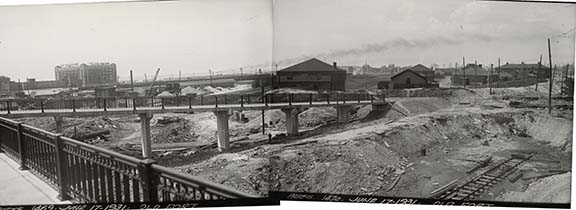 The new pedestrian bridge to the east gate of the fort on June 17, 1931, in two views by Toronto official photographer Arthur Goss. They are in a new exhibition in the Brick Magazine of photographs by Goss documenting work done at the fort during the 1930s. Source: City of Toronto Archives
The new pedestrian bridge to the east gate of the fort on June 17, 1931, in two views by Toronto official photographer Arthur Goss. They are in a new exhibition in the Brick Magazine of photographs by Goss documenting work done at the fort during the 1930s. Source: City of Toronto Archives

